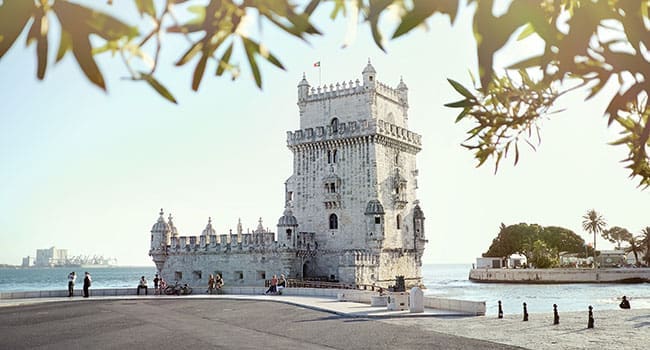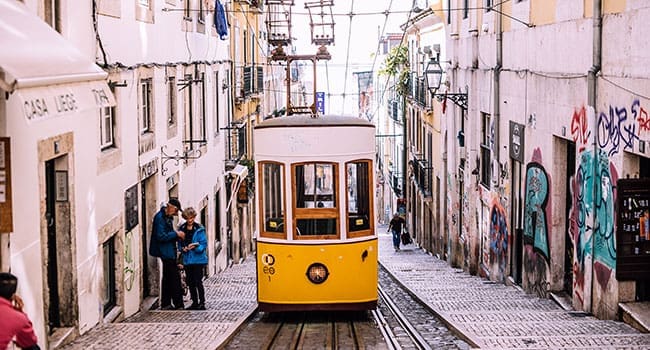 If you aren’t already convinced that Portugal is a travel bargain worth a visit, you will be.
If you aren’t already convinced that Portugal is a travel bargain worth a visit, you will be.
Let me tell you about the Belem District of Lisbon. There is a day or two worth of sightseeing here, and you can’t really say you’ve seen Lisbon without seeing Belem.
If much of Portugal is explained by its explorer past, then this is the district to explore that history. It was from Belem that many of the great Portuguese explorers left to “discover the world.”
From downtown Lisbon, hop aboard one of the yellow trams: if they are running, try to make it one of the old yellow trams. More often, however, you’ll be on one of the new super fast trams. Line #15 is the one that will get you out to the Belem district, which is about 6.5 km (four miles) from downtown.

The Tower in the Belem District of Lisbon. Photo by Alex Paganelli
The Monastery of Jeronimos (Mosteiro dos Jeronimos) is probably the most impressive building in this district. It is said that Vasco Da Gama slept in a tent and prayed on the site of this building before he left on his voyage. The monastery was built in 1502 by King Manuel I to commemorate Da Gama’s voyage. Da Gama’s tomb is inside.
The building’s flamboyant style is called the Manueline style, after the King who built it. It froths with motifs from the sea in a combination of late Gothic and early Renaissance styles. After it was built, later sailors would spend their last night here in prayer before embarking on voyages of discovery. The Cloisters inside are beautiful; its columns decorated again with ornate sea motifs.
The Belem tower looks … cute, although that is not normally a word used to describe a fortress built centuries ago to guard the entrance to Lisbon’s harbor. But this small white tower is as picturesque as it comes. It is also built in the Manueline style, and it is often used as a symbol of the country.

One of Lisbon’s trams you can catch to get to the Belem District. Photo by Robenson Gassant
The Monument to the Discoveries (Padrao dos Descobrimentos) is a “new monument.” This stone representation of a ship ready to sail, manned by all the important Portuguese giants of the era and, was built in 1960 to commemorate the 500th anniversary of the death of Prince Henry the Navigator.
Don’t forget to take in the extravagant Ajuda Palace (Palacio da Ajuda), filled with furniture, tapestries, and statues.
The nearby Belem Palace was built starting in the 16th century. It is now the official residence of the President of Portugal, so it can be visited only on Saturdays, when you will be able to see its richly furnished halls. Stop by the Coaches Museum (Museu dos Coches), which is part of the Palace, and which is not restricted to Saturdays. It has one of the largest collections of ornate coaches in the world.
All of these sites are within easy walking distance of each other. There are many cafes in the area. Most of the guidebooks will tell you that the best places for a drink and pastries (especially their custard tarts) are the Antiga Confeitaria de Belem or the Casa Pasteis. I agree that it’s worth a stop, just be aware that you won’t be the only tourist there.
Plan to spend at least one full day in this historic district, but don’t plan your visit for a Monday. That’s the day when many of the sites are closed. Any other day of the week, however, will round out your visit to Lisbon.
BECOME A TRAVEL LIKE THIS CONTRIBUTOR
Contact us for details.
The views, opinions and positions expressed by columnists and contributors are the author’s alone. They do not inherently or expressly reflect the views, opinions and/or positions of our publication.

